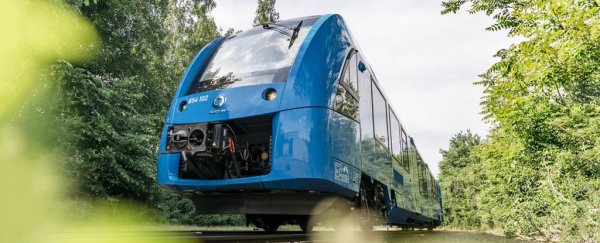Hydrogen fuel cells are a greener way to power vehicles. But they have also been cost-prohibitive. Now that's starting to change - last week, German passengers boarded the world's first hydrogen-powered trains.
"Sure, buying a hydrogen train is somewhat more expensive than a diesel train," said Stefan Schrank, a project manager at locomotive company Alstom, which built the trains, in an interview with Agence France-Presse, "but it is cheaper to run."
The new trains transport passengers along 100 kilometers (62 miles) of track and can travel up to 1,000 kilometers (621 miles) on a single tank of hydrogen, reaching top speeds of 140 km/h (87 mph).
Chemistry recap: Hydrogen fuel cells generate electricity by combining hydrogen with oxygen, and their only byproduct is water. That makes the cells a promising energy source that produces zero emissions and very little noise.
Though they remain pricey, hydrogen fuel cells have advantages over batteries.
Instead of recharging, for instance, you can just refuel them like you would a gas or diesel engine. And because train schedules are highly predictable, it's easier to build refueling infrastructure.
New research is helping cut the cost of hydrogen, and the fuel source is already in use elsewhere in the world to power buses and cars.
Trains are much heavier, though, so powering them with hydrogen instead of diesel could do much more to cut carbon emissions.
If all goes well with these first two trains, Alstom hopes to add another 12 to its Lower Saxony fleet. So while they might be the world's first hydrogen-powered trains, they're unlikely to be the last.
This article was originally published by Futurism. Read the original article.
